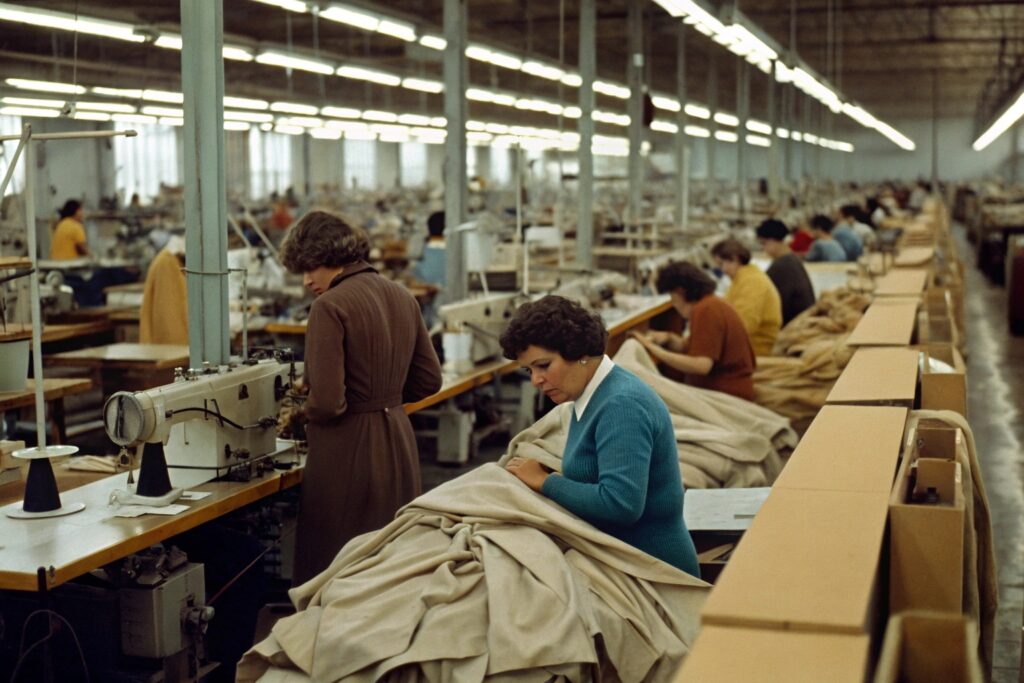When you see "Made in the USA" on a clothing label, does it automatically mean it's better for the planet? Let’s break down the facts behind this common assumption.
While "Made in the USA" often implies higher labor standards and shorter supply chains, sustainability depends on more than just location. Factors like material sourcing, production methods, and waste management play a bigger role in determining a garment's environmental impact.
To truly understand whether US-made clothing is more sustainable, we need to explore the ethics, economics, and environmental practices behind it. Let’s dive deeper.
Is Made in the USA Ethical?
Many consumers assume US-made clothing guarantees fair labor practices. But is this always the case? Let’s examine the reality.
While US labor laws are stricter than in many developing countries, ethical concerns like low wages, poor working conditions, and lack of union representation still exist in some domestic factories. True ethical production requires transparency and accountability, not just geographic location.

What Are the Hidden Challenges in US Garment Factories?
Despite stricter regulations, US garment workers face challenges such as:
- Low Wages: Many earn close to the federal minimum wage, which is often insufficient for a living wage in urban areas.
- Temporary Work: Seasonal and contract work is common, offering little job security or benefits.
- Limited Oversight: Smaller factories may not always comply with labor laws due to limited inspections.
| Issue | US Factories | Developing Countries |
|---|---|---|
| Minimum Wage Compliance | 85% | 40% |
| Union Representation | 12% | 2% |
| Workplace Safety Audits | 70% | 30% |
How Can Consumers Verify Ethical Practices?
To ensure ethical production, look for:
- Third-party certifications like Fair Trade or WRAP (Worldwide Responsible Accredited Production).
- Transparent supply chain disclosures from brands.
- Worker testimonials or factory visit reports.
Why Aren’t Clothes Made in the USA Anymore?
In the 1960s, 95% of clothing sold in the US was made domestically. Today, it’s less than 3%. What caused this dramatic shift?
The decline of US clothing manufacturing is largely due to globalization, which enabled brands to produce garments at significantly lower costs overseas. Labor costs, economies of scale, and trade policies all contributed to this shift.

How Did Globalization Impact US Clothing Manufacturing?
Globalization introduced three major changes:
- Lower Labor Costs: Countries like China and Bangladesh offer wages that are a fraction of US rates.
- Specialized Supply Chains: Overseas hubs provide access to raw materials, skilled labor, and efficient logistics.
- Trade Agreements: Policies like NAFTA made it easier to import garments tariff-free.
Can US Manufacturing Make a Comeback?
While some brands are reshoring production, challenges remain:
- High labor and operational costs.
- Limited infrastructure for large-scale textile production.
- Consumer resistance to higher prices.
Why Is Most of Your Clothing Made Outside the US?
From your favorite T-shirt to your winter coat, chances are they were made thousands of miles away. Why is this the norm?
Most clothing is made outside the US because of cost efficiency, specialized manufacturing hubs, and the ability to scale production quickly. Overseas factories can produce garments at a fraction of the cost and time required domestically.

What Are the Economic Benefits of Overseas Production?
Producing clothing abroad offers:
- Cost Savings: Labor costs in countries like Vietnam are 80-90% lower than in the US.
- Speed: Large factories can produce thousands of units per day.
- Flexibility: Access to a wide range of materials and techniques.
What Are the Hidden Costs of Overseas Production?
While cheaper, overseas production has downsides:
- Environmental impact from long-distance shipping.
- Ethical concerns like poor working conditions.
- Quality control challenges due to distance.
What Is the Most Sustainable Form of Clothing?
Sustainability in fashion isn’t just about where clothes are made—it’s about how they’re made, used, and disposed of. So, what makes clothing truly sustainable?
The most sustainable clothing is made from eco-friendly materials, produced using low-impact methods, and designed for longevity. It also considers the entire lifecycle, from raw materials to end-of-life recycling.

Which Materials Are Truly Eco-Friendly?
Sustainable materials include:
- Organic Cotton: Grown without harmful pesticides.
- Recycled Polyester: Reduces plastic waste.
- Tencel: Made from sustainably sourced wood pulp.
| Material | Water Usage | Carbon Footprint | Durability |
|---|---|---|---|
| Organic Cotton | Low | Medium | High |
| Recycled Polyester | Very Low | Low | Medium |
| Conventional Cotton | High | High | Medium |
How Can Consumers Support Sustainable Fashion?
To make a difference:
- Choose quality over quantity.
- Support brands with transparent practices.
- Repair and recycle old clothing.
Conclusion
While "Made in the USA" can offer some sustainability benefits, it’s not a guarantee. True sustainability depends on ethical practices, eco-friendly materials, and responsible consumption. By making informed choices, we can all contribute to a greener fashion industry.










